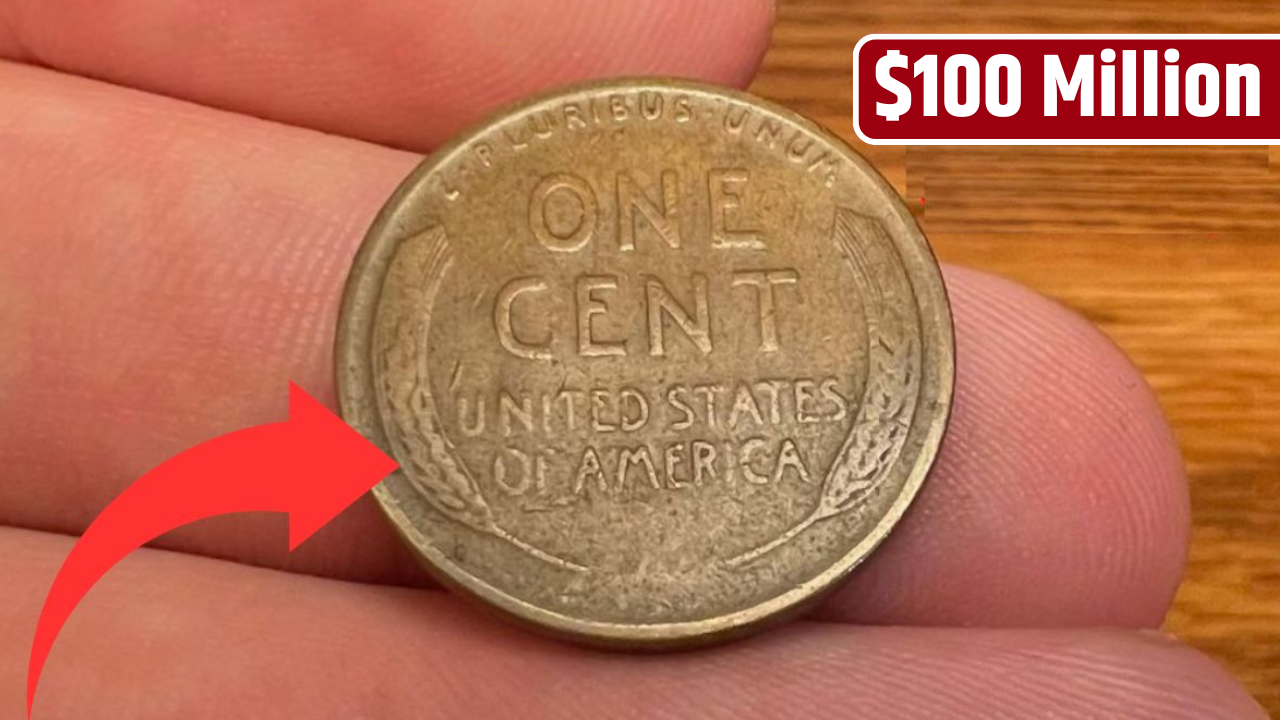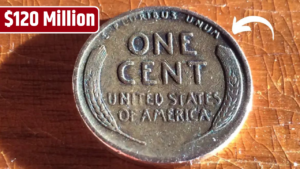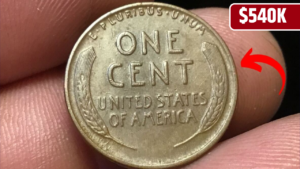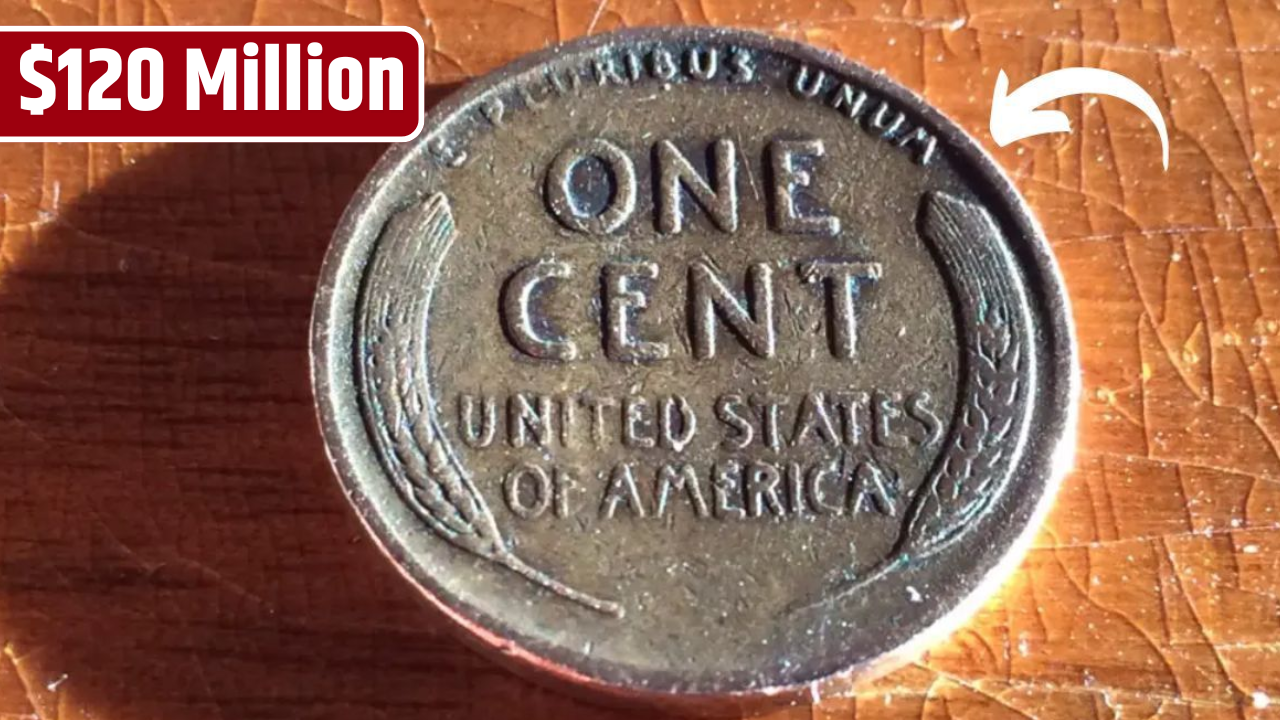The Lincoln Wheat Penny is one of the most iconic and beloved coins in U.S. history. First introduced in 1909 to commemorate Abraham Lincoln’s 100th birthday, this simple one-cent coin has since become a treasure trove for collectors—especially when rare variations emerge. While most are worth little more than face value, a few exceptional examples have fetched jaw-dropping figures. One such Lincoln Wheat Penny has reportedly been valued at $100 million, making it one of the rarest and most valuable coins ever known.
Let’s explore what makes certain Lincoln Wheat Pennies so valuable, how to spot them, and what you should be looking for in your own spare change.
A Brief History of the Lincoln Wheat Penny
The Lincoln Wheat Penny, minted from 1909 to 1958, was the first U.S. coin to feature a real historical figure. Its obverse shows President Lincoln’s profile, while the reverse side displays two wheat ears, symbolizing prosperity and unity.
These pennies were minted in Philadelphia, Denver, and San Francisco, and over time, their composition, design, and minting practices saw some changes. Most of them remain common, but certain errors and rare production years have made a few highly collectible—and extremely valuable.
What Makes a Penny Worth $100 Million?
While the $100 million valuation may sound unbelievable, coin collectors and experts note a few key reasons why a single Lincoln Wheat Penny could reach such a level:
| Factor | Description |
|---|---|
| Rarity | Extremely limited production or error coins with only a few known to exist. |
| Minting Error | Coins with double strikes, off-center printing, or use of the wrong metal. |
| Metal Composition | Notably, 1943 Copper Pennies were mistakenly made during a steel-only year. |
| Historical Significance | Some coins reflect important moments in minting or national history. |
| Condition (Grade) | Coins in pristine, uncirculated condition are significantly more valuable. |
In the case of the $100 million Lincoln Wheat Penny, experts believe it could be an experimental prototype, perhaps never intended for release, or it includes an unprecedented minting error. Its incredible value is driven not just by scarcity but by mystery, condition, and the intense interest of elite collectors willing to pay almost any price.
Key Rare Lincoln Wheat Pennies to Watch For
You might not find the $100 million version in your pocket change—but there are still other valuable Lincoln Wheat Pennies out there. Here are some of the most prized examples:
| Year & Mint Mark | Estimated Value (High Grade) | Why It’s Valuable |
|---|---|---|
| 1909-S VDB | $2,000 – $12,000+ | First year issue, limited San Francisco mintage |
| 1914-D | $2,000 – $10,000+ | Low mintage from the Denver Mint |
| 1922 No D | $1,000 – $10,000+ | Error where the Denver mint mark is missing |
| 1943 Copper | $100,000 – $1 million+ | Mistakenly made in copper during a steel year |
| 1955 Double Die | $1,000 – $10,000+ | Doubling error on the date and lettering |
How to Identify a Valuable Lincoln Wheat Penny
You don’t need to be a professional numismatist to find a valuable coin. Here’s how you can start:
- Check the Year and Mint Mark – Look for coins from 1909-S, 1914-D, 1943, 1955, and 1922.
- Look for Errors – Doubling of letters/numbers, off-center designs, or missing mint marks can indicate value.
- Assess the Condition – Coins with little to no wear are far more desirable.
- Research Online – Use trusted numismatic websites or forums like PCGS or NGC.
- Get a Professional Appraisal – If you suspect your penny is rare, have it graded by an expert.
Are Valuable Pennies Still in Circulation?
Surprisingly, yes. Some valuable Wheat Pennies are still floating around in change, estate collections, and old piggy banks. Although rare, it’s not impossible to stumble upon a coin worth hundreds—or even thousands—of dollars.
Why Coin Collecting Still Matters
The idea of a single penny being worth more than a luxury yacht is more than just a collector’s dream. It reflects the enduring importance of numismatics—the study and collection of coins—as a way to preserve history, celebrate artistry, and invest in rare tangible assets.
If you’ve ever dismissed pennies as spare change, now might be a good time to give them a second look. That dusty coin jar could be holding more than you think.
FAQs
What is the most valuable Lincoln Wheat Penny?
The 1943 Copper Penny is one of the most valuable, but reports of a unique Lincoln Penny valued at $100 million suggest there may be an even rarer prototype or error coin.
How can I tell if my penny is valuable?
Check the date, mint mark, and look for minting errors. Then, compare it against known rare pennies. For professional validation, consider getting it graded.
Can valuable pennies still be found in circulation?
Yes, though rare, coins like the 1955 Double Die or 1943 Copper occasionally turn up in collections or pocket change.
What does “VDB” stand for on some 1909 pennies?
It represents Victor David Brenner, the designer of the Lincoln Penny. Coins with his initials on the reverse (especially the 1909-S VDB) are highly collectible.
How do I get a coin professionally appraised?
Contact reputable grading services like PCGS or NGC, or visit a certified coin dealer for evaluation.









